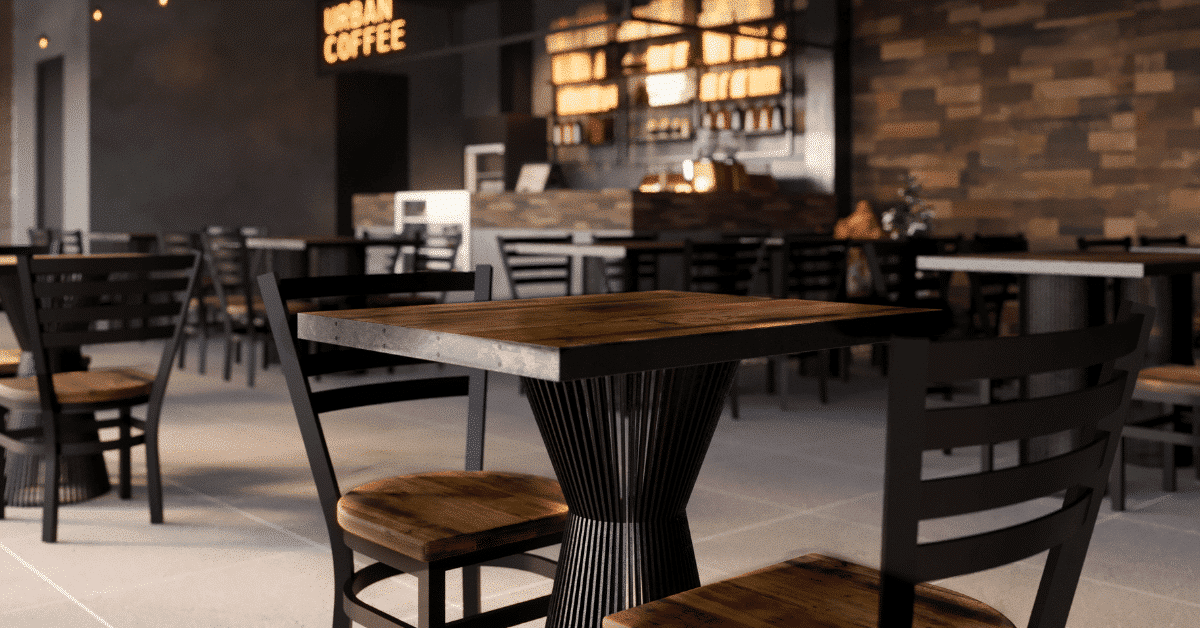The Ultimate Guide to Selecting and Purchasing Restaurant Furniture for Your Business

In this comprehensive guide, we’ll cover everything you need to know about selecting and purchasing the perfect restaurant furniture for your business. By the end of this article, you’ll have the knowledge and confidence to make informed decisions on the types, materials, design, and layout of the furniture, as well as how to choose the right supplier and manage your budget effectively.
Types of Restaurant Furniture
Chairs
- Standard Dining Chairs: These chairs are the most common type found in restaurants, offering a comfortable and functional seating option for your guests.
- Bar Stools: Ideal for bar areas and high-top tables, bar stools provide a casual seating option and can be found in various styles and materials.
Tables
- Dining Tables: Available in a range of shapes, sizes, and materials, dining tables are the centerpiece of your restaurant’s seating area.
- High-Top Tables: These tall tables are designed for use with bar stools, offering a casual dining experience in bar and lounge areas.
Booths
- Single Booths: Offering a cozy and intimate seating option, single booths are perfect for accommodating smaller groups or couples.
- Double Booths: Double booths provide seating for larger parties, making them a versatile and space-efficient choice for any restaurant.
Materials and Durability – Restaurant Furniture
Wood
- Hardwood: Known for its strength and durability, hardwood is a popular choice for restaurant furniture. Some common hardwoods used include oak, maple, and walnut.
- Softwood: Softwoods like pine are more affordable, but may not be as durable as hardwoods.
Metal
- Steel: Steel is a strong and durable material that’s well-suited for heavy-use environments. It can be powder-coated for additional protection and to match your restaurant’s design.
- Aluminum: Lightweight and resistant to corrosion, aluminum is ideal for outdoor seating areas.
Upholstery
- Vinyl: Vinyl is a popular choice for booth seating, as it’s easy to clean and maintain, and comes in a variety of colors and patterns.
- Fabric: Fabric upholstery offers more design options, but may require additional maintenance to keep clean.
Style and Design –Restaurant Furniture
Classic
- Traditional: Timeless designs, such as ladder-back chairs and pedestal tables, evoke a sense of history and elegance.
- Rustic: Distressed wood and wrought iron accents can create a warm and inviting atmosphere.
Modern
- Minimalist: Clean lines and simple forms make minimalist furniture an excellent choice for contemporary spaces.
- Industrial: Exposed metal and reclaimed materials can give your restaurant a trendy, urban edge.
Functionality and Comfort
- Ergonomics: Prioritize comfortable seating with proper lumbar support and cushioning to ensure a pleasant dining experience for your guests.
- Adjustability: Consider adjustable-height bar stools and tables to accommodate guests of various heights and improve accessibility.
- Stackability: Stackable chairs can save valuable storage space and make it easier to rearrange your restaurant’s layout as needed.
Space Planning and Layout – Restaurant Furniture
- Optimal Spacing: Allow at least 24 inches of space between tables to ensure guests can move freely and servers can navigate with ease.
- Zone Seating: Divide your restaurant into separate zones, such as dining, bar, and outdoor areas, to create distinct experiences for your guests.
- Maximize Capacity: Utilize a combination of tables, booths, and bar seating to maximize the number of guests you can accommodate.
Budgeting and Cost Considerations
- Establish a Budget: Determine your overall budget for furniture, keeping in mind that investing in quality pieces can save on replacement costs in the long run.
- Compare Prices: Research multiple suppliers and compare prices to find the best value for your investment.
- Buy in Bulk: Purchasing furniture in bulk may result in discounts or reduced shipping costs.
Maintenance and Cleaning
- Easy-to-Clean Materials: Choose materials that are easy to clean and maintain, such as vinyl upholstery and laminate table tops.
- Regular Maintenance: Schedule routine maintenance checks to identify and repair any damaged or worn-out furniture.
- Replacement Parts: Keep a stock of replacement parts, such as chair glides and table feet, to quickly address minor issues and extend the life of your furniture.
Supplier Selection and Delivery
- Reputable Suppliers: Research and choose suppliers with a solid reputation for providing high-quality products and excellent customer service.
- Warranty and Support: Look for suppliers that offer warranties and ongoing support to protect your investment and ensure your satisfaction.
- Delivery and Assembly: Coordinate with your supplier regarding delivery logistics and any assembly required for your new furniture.
Selecting and purchasing the ideal restaurant furniture is a crucial aspect of creating an inviting and functional dining environment. By following the guidance provided in this article, you’ll be well-equipped to make informed decisions on the types, materials, design, and layout of your furniture, as well as how to choose the right supplier and manage your budget effectively. With careful planning and attention to detail, you can create a comfortable and memorable dining experience for your guests that will keep them coming back for more.
